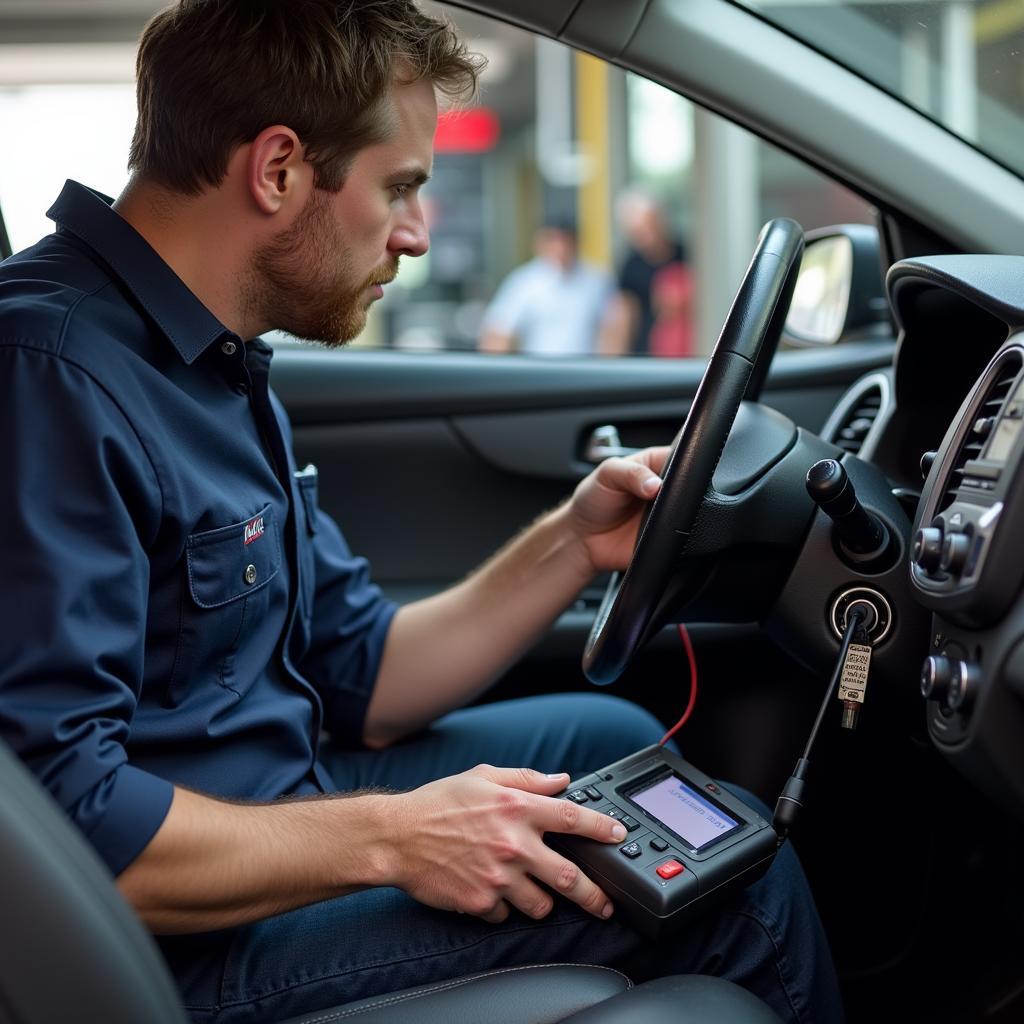The “ejector seat warning vector” – a phrase that might evoke images of fighter jets and high-stakes scenarios. While not as dramatic in the context of your car, it signals a critical issue demanding immediate attention. This warning, often displayed as a dashboard light or message, indicates a problem within your vehicle’s safety restraint system, specifically the airbag control unit.
Modern vehicles rely heavily on intricate networks of sensors and computers to maintain safety and performance. The airbag system, a crucial component of this network, utilizes a complex algorithm to determine when and how to deploy airbags in a collision. This algorithm, often referred to as a “vector”, dictates the force and timing of airbag deployment based on crash severity, seat occupancy, and passenger position.
Decoding the Warning: What Triggers an Ejector Seat Warning Vector?
The “ejector seat warning vector” message typically surfaces when the airbag control unit detects a fault within the system. This could be due to a myriad of reasons, ranging from faulty sensors and wiring issues to software glitches and even a low car battery.
-
Faulty Sensors: Sensors play a vital role in providing the control unit with accurate information about crash forces and passenger positioning. A malfunctioning sensor, such as the impact sensor or seat occupancy sensor, can disrupt this flow of information, triggering the warning.
-
Wiring Problems: The airbag system relies on a network of wiring harnesses to transmit signals between its components. Damaged, corroded, or loose wiring can disrupt communication, leading to the warning light.
-
Software Glitches: Like any computer system, the airbag control unit relies on software to function correctly. Software bugs or corruption can interfere with the control unit’s ability to interpret data and issue commands, resulting in the warning.
-
Low Battery Voltage: While seemingly unrelated, a low car battery can affect the airbag system. The control unit requires a stable voltage to operate correctly. A depleted battery can lead to voltage fluctuations, potentially triggering the warning as a precautionary measure.
Addressing the Issue: Remote Diagnostics and Reprogramming
Ignoring the “ejector seat warning vector” is highly discouraged. A malfunctioning airbag system can have serious consequences in the event of a collision. Fortunately, advancements in automotive technology allow for sophisticated diagnostic and repair solutions, often remotely.
Remote Diagnostics: Many modern vehicles come equipped with telematics systems that enable remote diagnostics. By connecting to your car wirelessly, expert technicians can analyze the airbag control unit’s data logs, pinpoint the root cause of the warning, and recommend appropriate solutions.
Software Reprogramming: If the issue stems from a software glitch, a remote software update may be all that’s needed. Automakers regularly release software updates to address bugs and improve system performance. Reprogramming the airbag control unit with the latest software version can often resolve the issue without requiring a physical visit to a repair shop.
Expert Consultation: In some cases, the issue may necessitate a more hands-on approach. Consulting with a qualified automotive electrician specializing in vehicle diagnostics is recommended. They can perform in-depth diagnostics, identify the faulty component, and carry out the necessary repairs.
“When dealing with safety-critical systems like airbags, relying on qualified professionals and advanced diagnostic tools is essential,” says John Miller, a senior automotive electrician with over 20 years of experience. “Remote diagnostics and reprogramming have revolutionized the way we diagnose and fix these intricate systems, often saving vehicle owners time and money.”
 Automotive Electrician Inspecting Vehicle
Automotive Electrician Inspecting Vehicle
Staying Safe: Proactive Measures and Expert Help
While the “ejector seat warning vector” might sound intimidating, understanding its implications and seeking timely solutions can mitigate risks and ensure your safety on the road.
Remember, a well-maintained vehicle is a safe vehicle. Adhering to your car’s recommended service schedule, addressing warning lights promptly, and consulting with qualified professionals can go a long way in preventing potential issues and ensuring your peace of mind.
